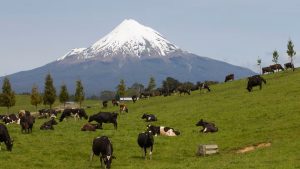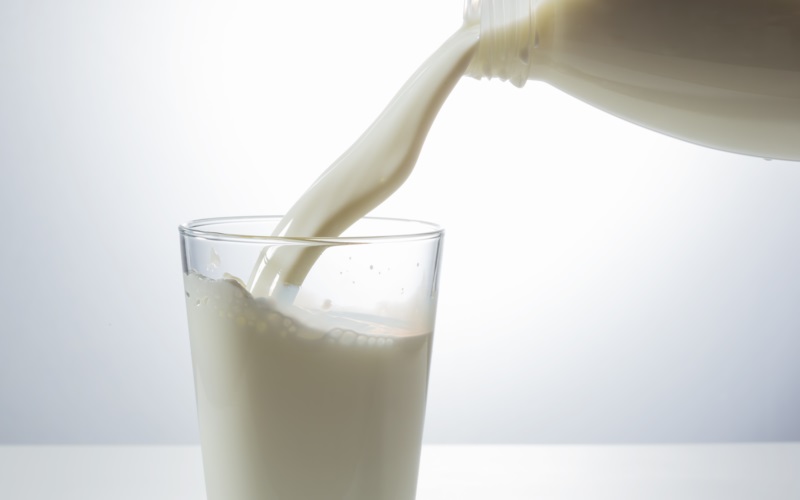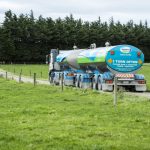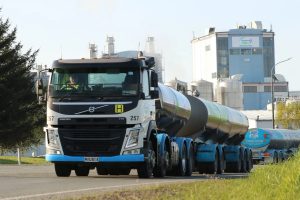
A new Rabobank report shows NZ dairy production costs lead the way among major dairy exporting countries.
Milk production costs in New Zealand continue to compare favourably with other dairy-exporting regions despite on-farm costs soaring globally.
New Zealand is leading the way, closely followed by Australia, as the lowest cost producer, having increased its cost advantage to USc5/litre in 2024 (up from USc2/litre in 2023), says Rabobank’s new report, The Cost of Milk: dissecting milk production costs.
Its author, Emma Higgins, said the five-year average total cost of production sits at US 0.37c/litre for both New Zealand and Australia, compared to around US0.48c/litre for the other regions.
The Oceania region’s strong reliance on pasture-grassing, supplemented with homegrown feed stuffs or locally produced feeds, has more broadly supported its low-cost-of-production positioning.
“With this comparison being made in US dollars, NZ and Australian production costs have also benefitted from a 9% and 8% discount, respectively, in 2024 compared to 2019, based on a stronger USD compared to their local currencies.”
The downside of a stronger USD for non-US production regions is the impact on cost pressure for imported inputs.
Fertiliser and fuel cost items tend to feel this pressure most keenly in Oceania, averaging around 15% of New Zealand farm working expenses in the past five years, Higgins said.
China remains the highest cost milk producer, though it has become more cost-competitive in the past three years.
“Feed costs make up over 60% of China’s total costs of production, with farming systems relying on large quantities of imported feed (and other inputs). Weaker feed prices in 2023 and 2024 have helped to improve China’s costs, supported by double-digit percentage declines in corn and soybeans prices in 2024,” she said.
The report looked at production costs across eight major exporting regions – Argentina, Australia, China, Ireland, New Zealand, the Netherlands, California and the upper midwest of the US.
The average total cost for milk production across these regions increased by around US6c/litre from 2019 to 2024 (up by 14%) with over 70% of the increase occurring since 2021.
Production cost increases have been broad based.
“The majority of the cost pressure has been on-farm working expenses rather than other ancillary costs such as servicing debt, taxes, and depreciation,” Higgens said.
“The latest dramatic cyclical cost jump, beginning in 2021, has occurred amongst a unique backdrop, differing from other price hike cycles.”
Feed and fertiliser cost increases at the farm gate resulted from inclement weather, the fallout of the Ukraine war increasing energy prices, trade disruptions, elevated shipping cost and broader supply chain disruptions.
These costs lifted across the eight regions in 2021-2022, and remained elevated through 2023, until 2024 when all areas experienced relief, narrowing the cost band back to 2019 levels.
“Feed expenses have been the largest culprit in cost increases, with average feed bills across the eight regions rising 19% from 2019 to 2024.
“Feed receipts started to pull back due to yield improvement and good weather in 2024, while fertiliser costs have also retreated as supply remains ample for demand. Interest rates are declining in many regions as the easing cycle for monetary policy begins.”
The dairy sector has experienced significant price and costs volatility during the past decade and this will not change in the future, Higgins said.
“Continued cost structure management, relative to milk output, will be required to maintain dairy farmers’ economic resilience in a potentially turbulent business operating environment – something Kiwi dairy farmers have demonstrated in previous commodity price down cycles.”
You can now read the most important #news on #eDairyNews #Whatsapp channels!!!
🇺🇸 eDairy News INGLÊS: https://whatsapp.com/channel/0029VaKsjzGDTkJyIN6hcP1K



















